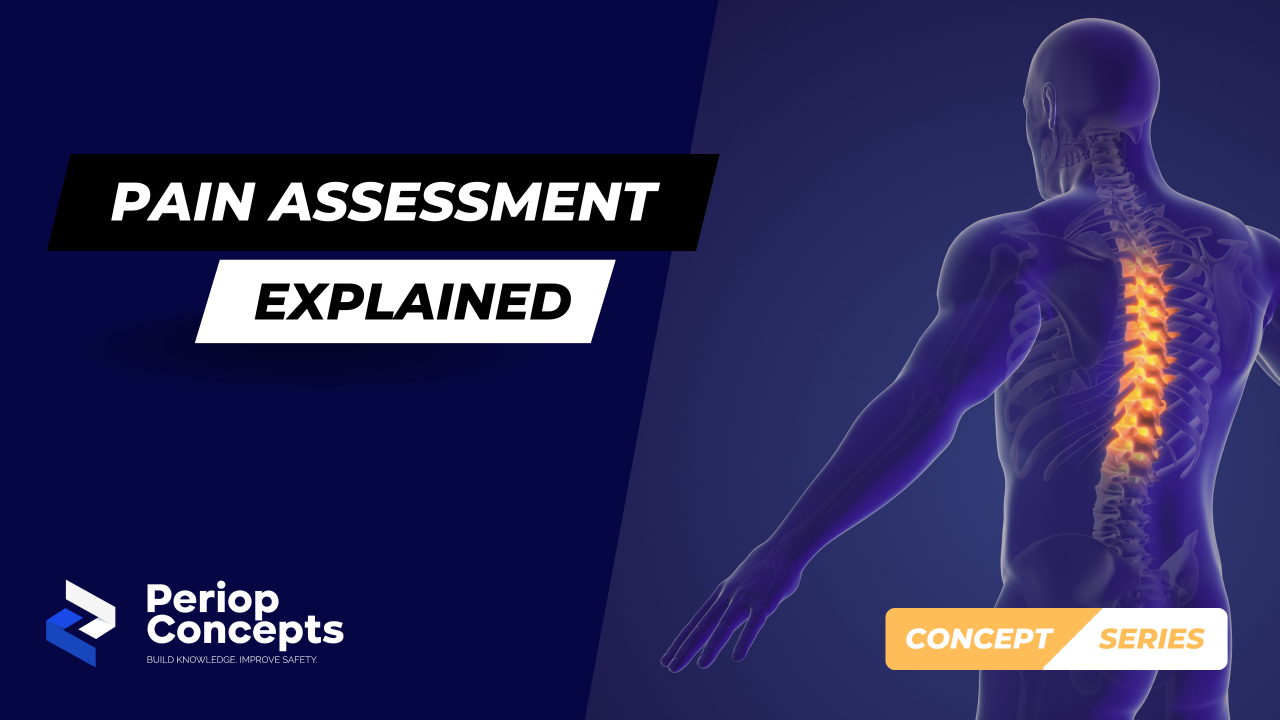Perioperative Pain Assessment
Feb 27, 2025
On a Scale of 0 to 10…. 🩺
Pain is a unique and subjective experience 🧠, thus making it extremely difficult to measure in an objective manner. Acute pain assessment in the perioperative environment happens on a daily basis ⚕️, utilising a variety of different assessment methods 📝 and tools 🛠️ in order to provide a successful pain management plan 💊. Here are some of the key factors for a thorough perioperative pain assessment:
Pre op assessment:
🩺Does the patient have a history of chronic pain?
💉If yes, establish the nature and location of the pain
🔴 What (if any) is their baseline level of pain?
💊 What (if any) is their analgesia regime, and have they had their usual pain medications?
🦠 Has the patient had multiple surgeries? These patients are at a higher risk of developing chronic or prolonged post-surgical pain ⚠️, particularly if the surgeries are performed on the same area, e.g., multiple abdominal procedures.
Intra-op assessment:
Under general anaesthesia 🛏️, pain assessment is guided by physiological response to surgical stimuli 🔬. Close monitoring of vital signs, in particular:
❤️ Heart rate
💉 Blood pressure
🌬️ Respiratory rate
This data will help to guide analgesia requirements throughout the procedure 🛠️.
Post-op assessment:
Post-operative pain assessment in the recovery room can be challenging to perform 😓 and can change rapidly in a short period of time. The key to a thorough pain assessment is to account for information received from the pre and intra-op assessments 📊, then collect post-op information using a variety of different assessment tools 🧰:
Numeric rating scale (NRS):
We all know this one 📏 - “using a scale of 0-10, how would you rate your pain? 0 being nothing, ten being the worst pain you have ever experienced.”
This tool is useful in determining the intensity of pain 🔥, and also provides an objective scale to determine the effectiveness of analgesia that has been administered 💊.
Functional Assessment Score (FAS):
The FAS provides an indication of limitations to a patient’s function caused by pain as observed by the clinician 👨⚕️. Functional activity expectations need to be tailored to suit the patient’s condition 🛌, and in the setting of the recovery room, this would generally be based on a patient’s ability to deep breath and cough 🤧, or to shuffle themselves comfortably/sit up for limb surgeries 🦵.
Talk to your patient!
Gather descriptive information from your patient 🗣️, such as what the pain feels like (e.g. burning 🔥, shooting 🧨, throbbing ❤️🩹), where the pain is located 📍, its duration ⏰ and triggers ⚠️, and so on. This information can help to detect any potential abnormalities or concerns 👀:
🦴For example; a wrist ORIF patient that feels a tight, pressure-type pain under their cast may need a surgical review 🏥 - imagine if you had just treated their numerical rating and not questioned the type of pain!!
😣A patient may be in distress, however, the pain is mainly associated with their chronic lower back pain 💥 (from lying flat on the operating table for hours) and they are not really concerned with the surgical pain 🤕.
For patients who are culturally and linguistically diverse 🌍, or for those with cognitive impairment 🧠, other behavioural tools should be used to assess pain, such as the FACES scale 😷, or the PainAD scale.
Remember, pain is an extremely complex and highly unique experience 😖 - there is no such thing as a “non-painful” procedure ✋, and everyone experiences things differently 🤷♀️. You should never discount a patient’s pain 🚫, and everyone has the right to receive high-quality pain management 💉.
Build Knowledge✅
Improve Safety✅
References:
ACSQHC (2024) Quality statement 2 - Acute pain assessment
Adeboye, A., Hart, R., Senapathi, S. H., Ali, N., Holman, L., & Thomas, H. W. (2021). Assessment of Functional Pain Score by Comparing to Traditional Pain Scores. Cureus, 13(8), e16847. https://doi.org/10.7759/cureus.16847
Stay connected with news and updates!
Join our mailing list to receive the latest news and updates from our team.
Don't worry, your information will not be shared.
We hate SPAM. We will never sell your information, for any reason.



